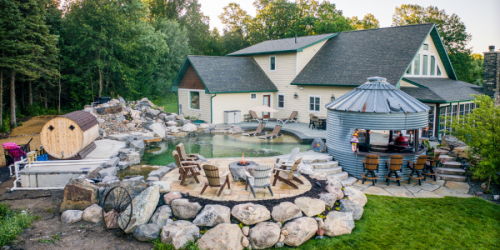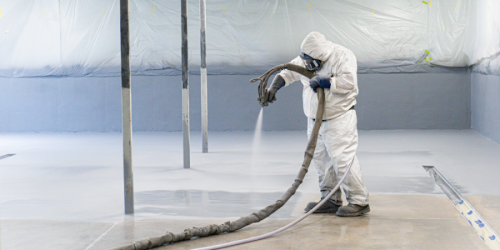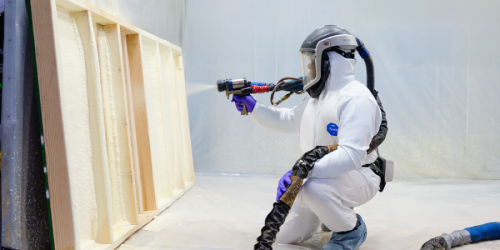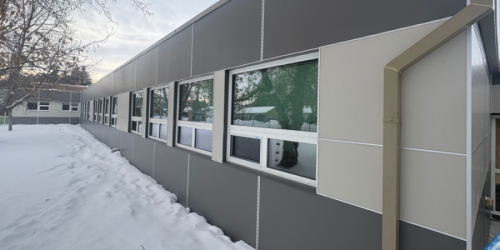Q&A Forums
Flue pipe wrapping Post New Topic | Post Reply
| Author | Comments |
|---|---|
|
Posted: Feb 08, 2011 10:41 AM
|
Flue pipe wrapping
I have decided to have the floor of the attic spray foamed essentially keeping the attic vented. However, where my furnace flue pipe exits the mechanical room ceiling into the attic (then out the roof) it is a very small/tight area (low pitch roof.) Because of this, I want to somehow have the contractor wrap it with super high temp blanket/insulation and mechanically strap it on. (easy removal for inspection. Problem is, rockwool is not recommended (per BPI.org) and my contractor recommended that.Does anyone know of a product that will do what I need and is readily available? Thanks |
|
philip mullins
Posted: Feb 08, 2011 12:13 PM
|
Michael Renick Smock & Schonthaler Ins Ph 814-456-4222 Fax 814-456-8346 mike@theinsulationguy.com |
|
John Shockney
Posted: Feb 08, 2011 03:38 PM
|
You don’t have a plus 90% furnace (vented in pvc)?? What kind of fuel are you burning that still has all that heat going out the flue? And waisting all that money!! Best way to lower your heating bill and will cost less money than spray foam is to upgrade that furnace to a dual fuel heat pump and 98% gas furnace, that’s what I would recommend first and then spray foam in the attic. Also 3M makes a fire rated wrap that we install on commercial kitchen exhaust systems as required by code that would solve your problem. Airpro Spray Foam & HVAC |
|
Posted: Feb 08, 2011 03:58 PM
|
I have a 5 year old furnace (gas) that is 85% efficiency rating and exhausts out the original flue. Buying a new furnace is out of the question so wrapping the flue is what I need to do. My contractor said they have a system they want to use and I am waiting to hear what it is. |
|
maurice richter
Posted: Feb 08, 2011 08:46 PM
|
I understand the cost of changing the furnace. Take your time and research that too. That's what I am doing too. After you upgrade insualtion, you will have a better idea what changes need to happen. As for that flue, You probably have a "B" or similar flue. If it is double wall then the outer wall of the flue will be a bit cooler. You could check the temp of the flue at the end of a long heat cycle. The temp may not be as high as you worry about. I repair commercial kitchen equipment. 600 degree ovens are insulated with fiberglass. So you still want to be careful and double check the type of fiberglass (not intending to offend you spray foam people). Obviously don't take my word for it because this is your home and safety! |
|
Daniel X
Posted: Feb 09, 2011 12:51 AM
|
Why would mineral fibre not work? It's used for fire-proofing steel structure, it's good to 1200*+... what more do you want? |
|
Posted: Feb 09, 2011 03:42 AM
|
dll hit it,,, mineral fiber wrap... (thats filterglass for those of you from rio linda) |
|
Posted: Feb 09, 2011 03:45 AM
|
Both contractors after researching advise it is not inline with the BPI.org guidelines and they will pursue a different type of insulation system rather then rockwool. I have seen 3m makes radiant blankets but neither contractor has told me yet what they are going to use. |
|
Posted: Feb 09, 2011 08:29 AM
|
One contractor just emailed me and they will be using AES insulation blanket to do the job! Seems like a good product to me |
|
John Shockney
Posted: Feb 09, 2011 04:13 PM
|
Personally I had never looked at the BPI standards until today but after looking at their building envelope document they defer their recommendations to the NFAP (National Fire Protection Association for those of you in RoLinda) as you can see from the paragraph below copied from that document. “Recessed can light fixtures that are not IC rated and chimneys must be baffled with an effective dam prior to insulating to maintain a minimum 3” clearance to the insulation being installed. Single-walled flue pipes require a minimum 6” clearance to insulation or other combustible materials. Refer to NFPA 54 for additional requirements for specific chimney materials” NFAP 54 is the National Fuel Gas code dealing with all heating appliance installations and covers the flue that you are dealing with only from a fire prevention standpoint not a building envelope or air sealing standpoint. After looking up the spec for the type-B insulated vent pipe that should be used for your 80% gas furnace the recommendation is that a one inch air gap minimum clearance is required from all combustibles and a fire stop collar be installed at the ceiling penetration. Due to my experience and training in the HVAC trade I would ask some questions regarding this application and installation of the B-vent before making further recommendations. Are there any other appliances attached to this flue and what are they? What is the size of the furnace? What is the size of the flue pipe going through the ceiling and roof? How long is the flue pipe run and are there a lot of elbows? The reason I ask is the most furnace installers get lazy and just attach to an existing flue pipe when they should run the proper size vent all the way to the outside or use a flue liner and a flue liner would solve your problem and prevent condensation in an over-sized flue that would cause premature failure of the flue. The flue gas temps that you should get in a properly functioning 80% furnace should only be in the 2-300 degree and the B-vent is rated for a lot higher temps 2 inches of a fiberglass duct wrap would probably be ok but isn’t rated for this application the 3M fire barrier duct wrap would exceed your needs check the link I have provided. Also since you are sealing your house up for better energy savings remember that your 80% furnace cannot draw its combustion air from the living space and should have a properly sized combustion air supply vent ran from the outside. A plus 90% furnace has a combustion air intake pipe and a sealed combustion chamber to eliminate this need. the AES insulation looks ok but I have never used it. We have used the 3M fire barrier wrap in a lot of applications. Airpro |
|
angus mcdougald
Posted: Feb 10, 2011 12:35 AM
|
Tin and fire caulk..... |
|
Posted: Feb 10, 2011 05:32 AM
|
The contractor will do a house pressure test before and after and as long as the pressure test after is acceptable for my furnace and hot water hear and dryer (only furnace and HW heater go through b vent) then I am ok. Otherwise I know I would have to install a fresh air intake gizmo. The AES wool blanket is cheap and will be help on mechanically for easy removal for inspection. That whole area of my attic is HOT as viewed through their thermal camera. You then see blue on the roof line where cold air is leaking in. I like the idea of the wrap especially since this area is a 4/12 pitch and to effectively tin and fire caulk would be a real feat versus wrapping then spraying at each end to seal. |
|
angus mcdougald
Posted: Feb 10, 2011 07:01 AM
|
First I believe that you can use rock wool, but the issue really is the airsealing. Tin and fire caulk is the simplest Second when the water heater fails for spillage (which is at least a 50/50) you should replace the unit with sealed combustion rather then spending on a fix to save a crappy waterheater. As an aside, I am interested in your project- are you using the zero interest 10000 loan? How did you hear about the program? How did you find your contractor and auditor? |
|
John Shockney
Posted: Feb 10, 2011 10:29 AM
|
You and your contractor are wrong about not needing a combustion air intake ran to your mechanical room that the furnace and water heater are in. Also this room should be sealed off from the living space with no return or supply vents in it and all ductwork should be well sealed so no air from this room is drawn into the heating system and then into the living space. These are NFPA and Building code requirements that some contractors overlook on older homes because “that’s the way the old furnace was installed” this doesn’t make the installation right or safe from today’s standards when I replace any furnace or water heater I make sure to meet or exceed all safety and code requirements, these requirements are to protect you and your household from not only fire but also CO poisoning. The contractor that installed your new furnace 5 years ago must have cut corners because these codes have been in place for over 20 years and I have been meeting these requirements for almost 30 years when they were first proposed. Airpro Heating and Air Conditioning |





























